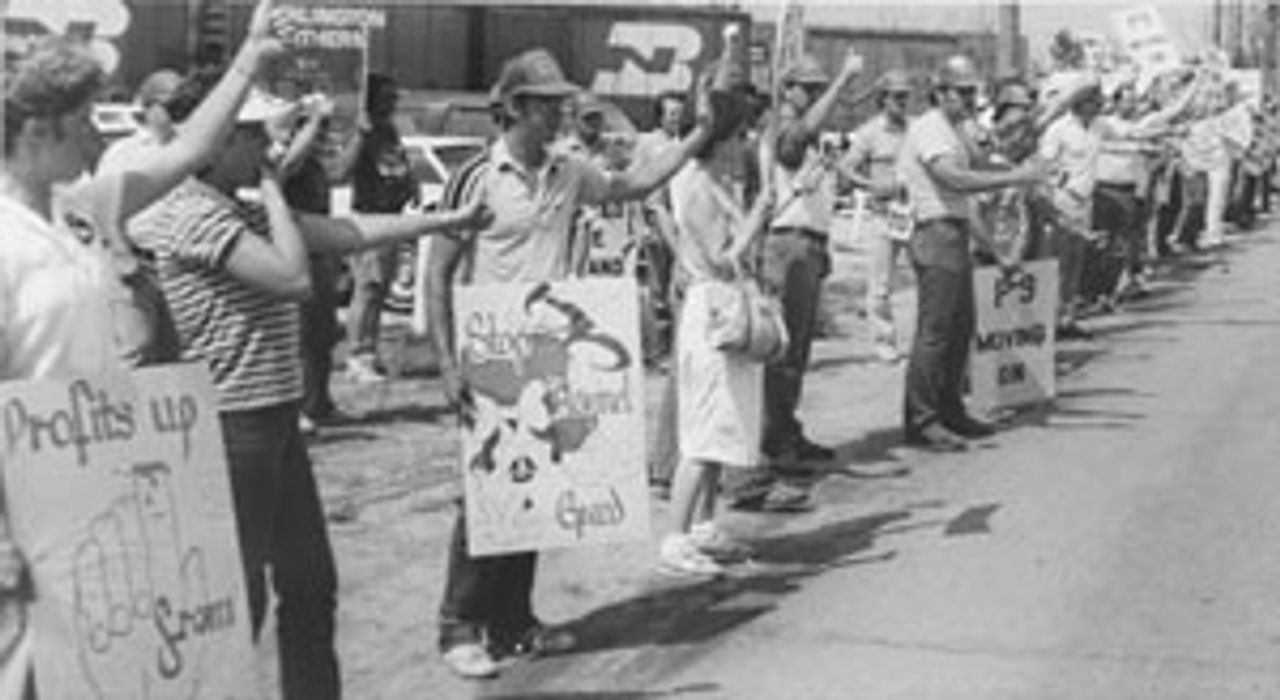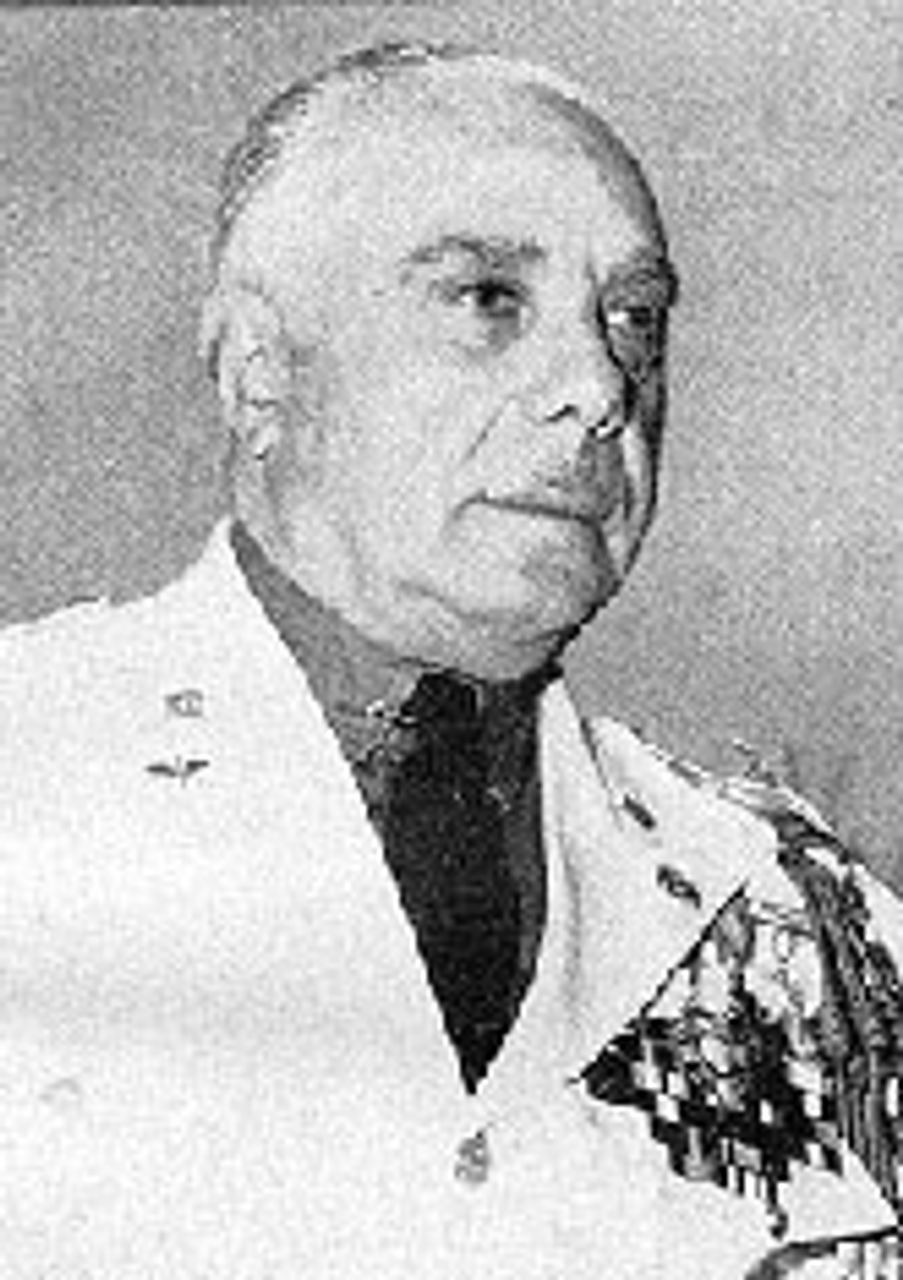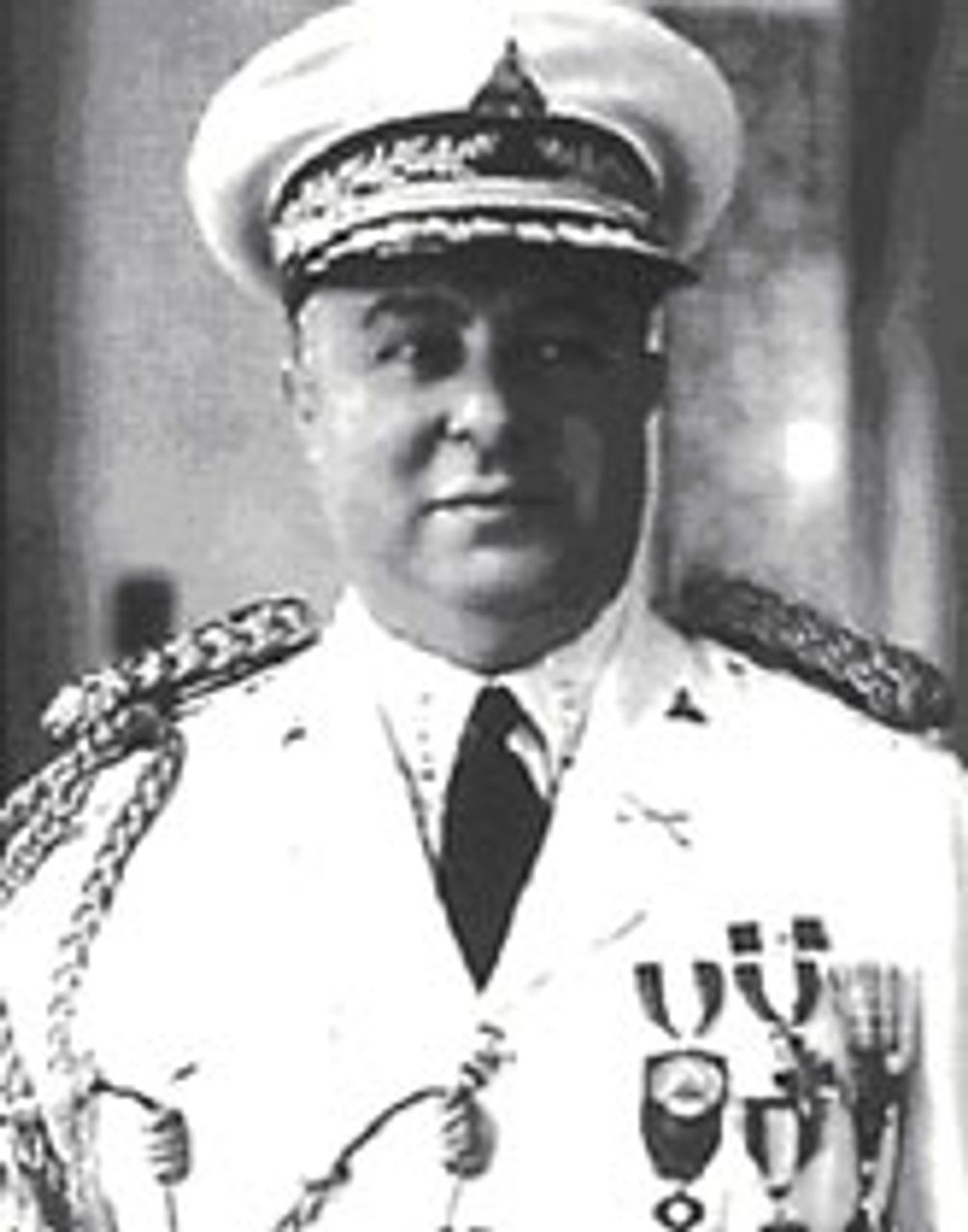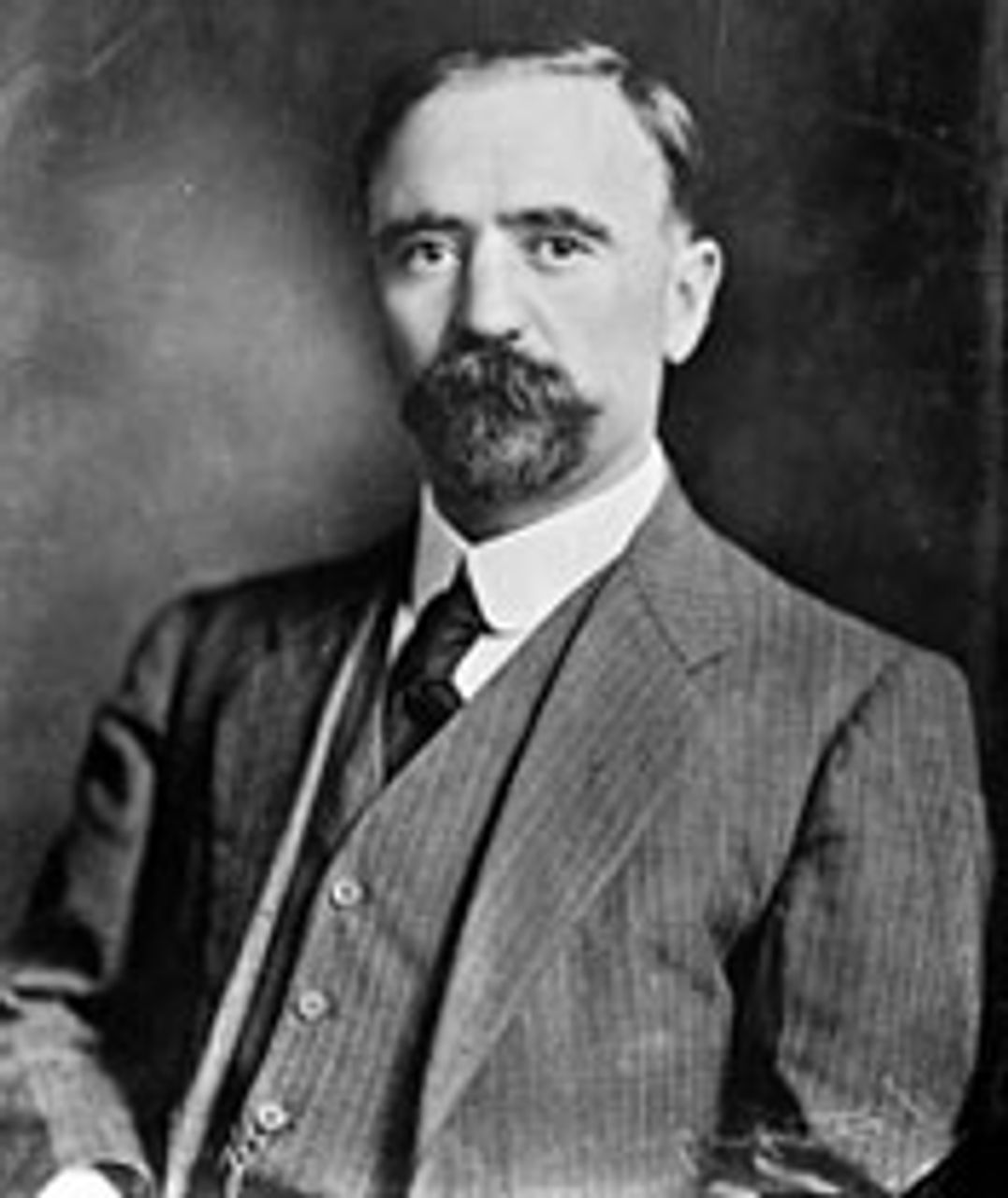This Week in History provides brief synopses of important historical events whose anniversaries fall this week.
25 Years Ago | 50 Years Ago | 75 Years Ago | 100 Years Ago
25 years ago: AFL-CIO completes betrayal of Hormel strike
 Hormel strike
Hormel strikeIn a major landmark in the decline of American trade unionism, this week in 1986, the United Food and Commercial Workers (UFCW), acting with the support of the AFL-CIO bureaucracy, completed its destruction of UFCW Local P-9, which had been on strike against meatpacking giant Hormel in Austin, Minnesota for nearly ten months.
Armed with a court order placing P-9 in trusteeship and accompanied by police, UFCW official Joseph T. Hansen appeared in Austin and seized P-9 documents, office space and bank accounts. He immediately declared the strike over, appointed a new local leadership, and made clear that the UFCW would conclude negotiations on Hormel’s terms. The strikebreaking operation by the UFCW campaign left no stone unturned—courts even granted Hansen control over the bank account of the United Support Group, a charity that raised funds to feed the families of the striking workers.
The defeat did not result from a lack of support in the working class. Across the US, workers’ meetings raised funds and secured pronouncements of solidarity, Minnesota workers and farmers rallied in support, and meatpacking workers at other plants—including a Hormel facility in nearby Ottumwa, Iowa—backed the Austin workers. Indeed, the UFCW’s determination to destroy the strike grew as the struggle increasingly laid bare the basic class divisions and in particular the role of the Democratic Party, whose Minnesota governor, Rudy Perpich, had called out the National Guard to escort scabbing workers past P-9 pickets.
Joseph T. Hansen has been rewarded handsomely for his role in the destruction of P-9. Appointed UFCW regional coordinator for Minnesota in 1985, when the strike began, in 1997 Hansen was elevated to international secretary-treasurer and in 2004 was named union president. He was a founding member of the Change to Win coalition and is currently chairman. In his capacity as UFCW president, Hansen was paid $353,000 in 2010, according to the US Department of Labor.
50 years ago: Trujillo, dictator of the Dominican Republic, gunned down
 Trujillo
TrujilloOn May 29, 1961, Rafael Trujillo, who had ruled the Dominican Republic as a dictator since 1930, was gunned down in a carefully planned ambush likely orchestrated by the US Central Intelligence Agency (CIA).
Trujillo was one of the many US “assets” to outlive their usefulness to American imperialism. His career as a military man began in 1916 during a US Marines occupation. In 1930 he assumed full power by rigging an election victory. Soon thereafter he declared himself “Generalissimo” and enforced his rule through death squads, the hated SIM secret service, bribery and corruption, and a grotesque cult of personality that saw a great many place names in the Dominican Republic renamed after the dictator—including the capital Santo Domingo, which officially became Ciudad Trujillo in 1930.
Throughout El Jefe, as Trujillo was nicknamed, was a valuable US ally. A fervent anti-communist, Trujillo was relied upon to suppress the population of the Dominican Republic and stood ready to police Haiti, with which it shares the island of Hispaniola. In October 1937, Trujillo ordered the slaughter of between 20,000 and 35,000 Haitians and Haitian-Dominicans living in border areas as part of a massive ethnic cleansing operation known as the Parsley Massacre. Trujillo articulated a racist-nationalist ideology called antihatianismo that privileged lighter-skinned and Spanish-speaking Dominicans over black and Creole Dominicans and Haitians.
By 1961, Trujillo had become too much of a liability for the US. Recent high-profile crimes—including the brutal deaths of the Mirabel sisters, three upper-class women who were opponents of the regime, and the attempt to assassinate Venezuelan President Romulo Betancourt—further discredited his regime. The Kennedy administration also feared that a nationalist revolution, along the lines of that which had taken place in Cuba in 1959, could happen in Hispaniola.
75 years ago: Somoza seizes power in Nicaragua
 Anastasio Somoza Garcia
Anastasio Somoza GarciaOn the 31st of May forces loyal to General Anastasio Somoza Garcia attacked the Nicaraguan capital of Managua. On June 6, President Juan Bautista Sacasa and Vice-President Rodolfo Espinosa resigned, and the Minister of Gobernacion Irias Julián was appointed acting president. Sacasa then left for exile in El Salvador.
During the following week the Nicaraguan Congress unanimously selected Somoza’s choice as provisional president, Carlos Alberto Brenes Jarquín. Within a year, Somoza made himself president of the country.
Nicaragua, the largest Central American country, gained independence from Mexico in 1839 after Spanish control ended in 1821. However, the country was not unified until the dictatorship of Jose Santos Zelaya in the late nineteenth century. While a ruthless dictator, Zelaya was too independent for Washington, who eventually forced him from office in 1909. US Marines invaded Nicaragua three years later.
US military forces did not leave until 1933 after President Franklin Delano Roosevelt enacted his “Good Neighbor Policy.” The US left Sacasa in office and at the urging of American Ambassador Matthew E. Hanna, Somoza was appointed as director of the National Guard. In this capacity, Somoza ordered the assassination of liberal opposition leader Augusto Cesar Sandino in 1934 as the latter returned from peace talks with Sacasa.
In coming to power Somoza inaugurated an aggressive family dictatorship that would last for almost for 45 years. The power behind the Somoza throne was the US trained Nicaraguan National Guard; the family’s rabid anti-Communism guaranteed the backing of successive American administrations regardless of whether Republican or Democrat. “Somoza may be a son of a bitch, but he’s our son of a bitch,” Roosevelt is reported to have said in 1939.
100 years ago: Repression in Mexico after Madero victory
 Francisco Madero
Francisco MaderoA week after the resignation of Porfirio Diaz had brought an end to the first phase of the Mexican Revolution, the conflict between the social grievances of the masses and the narrow aims of revolutionary leader Francisco Madero came to the fore this week in 1911.
The abdication of Diaz had left the repressive apparatus of the Mexican state untouched. On June 5, 1911, a large rally demanding the right to vote for women took place in Santa Julia, one of the poorest districts of Mexico City. A detachment of police crushed the demonstration, killing nine. Riots took place elsewhere in Mexico City, including the suburb of Xochimilco. Madero, who was due to arrive in Mexico City on June 7, had ordered rebel forces surrounding the capital back to Cuernavaca, clearing the way for the crackdown.
Elsewhere, Maderist forces joined in the repression. A detachment of Madero’s forces was sent to Baja California, joining a unit of federales in a bloody operation against Ensenada, a base of strength for supporters of exiled anarchist leader Ricardo Flores Magón. Twenty-eight Magonists were reportedly executed. In Cholua, protests erupted after Maderist forces carried out the execution of five people accused of looting. In Leon, Guanajuato, Maderist military leader Colonel Juan Navarro interrupted festivities over his arrival on June 3 to deal with a crowd that, misunderstanding the intentions of the rebel leadership, had gone to a local jail to free prisoners. Over 100 were reportedly killed in the bloodletting.
